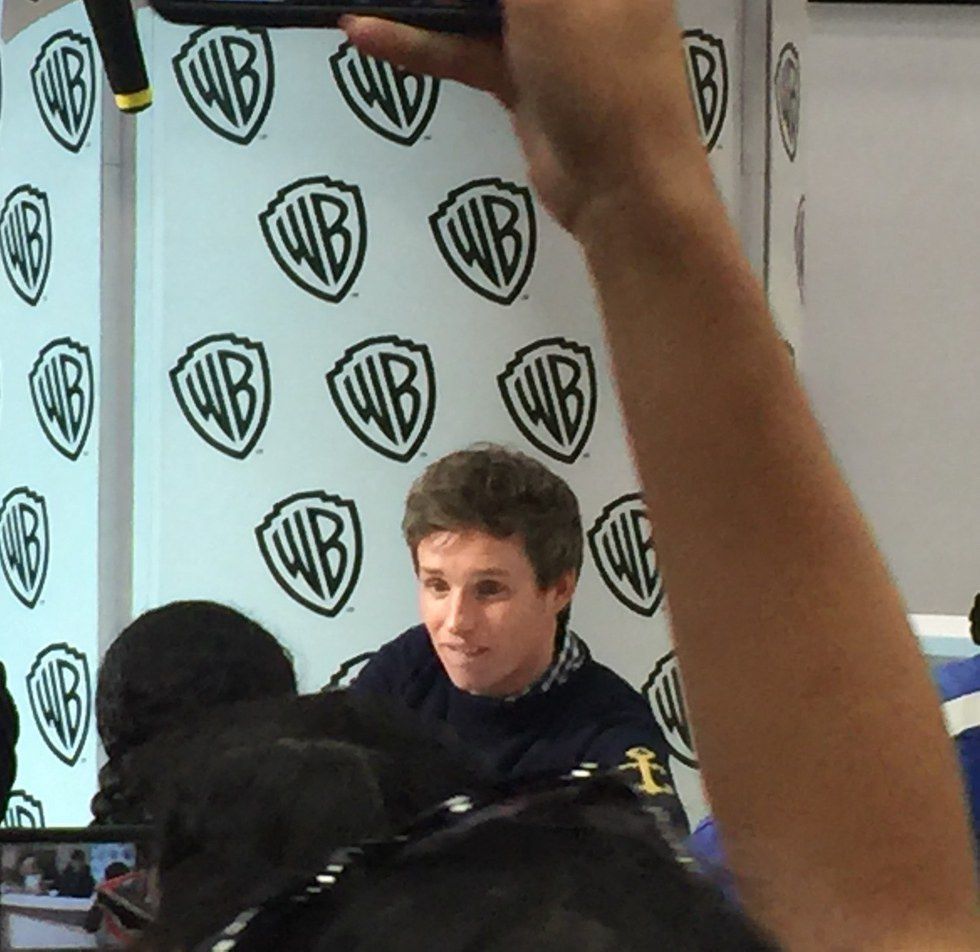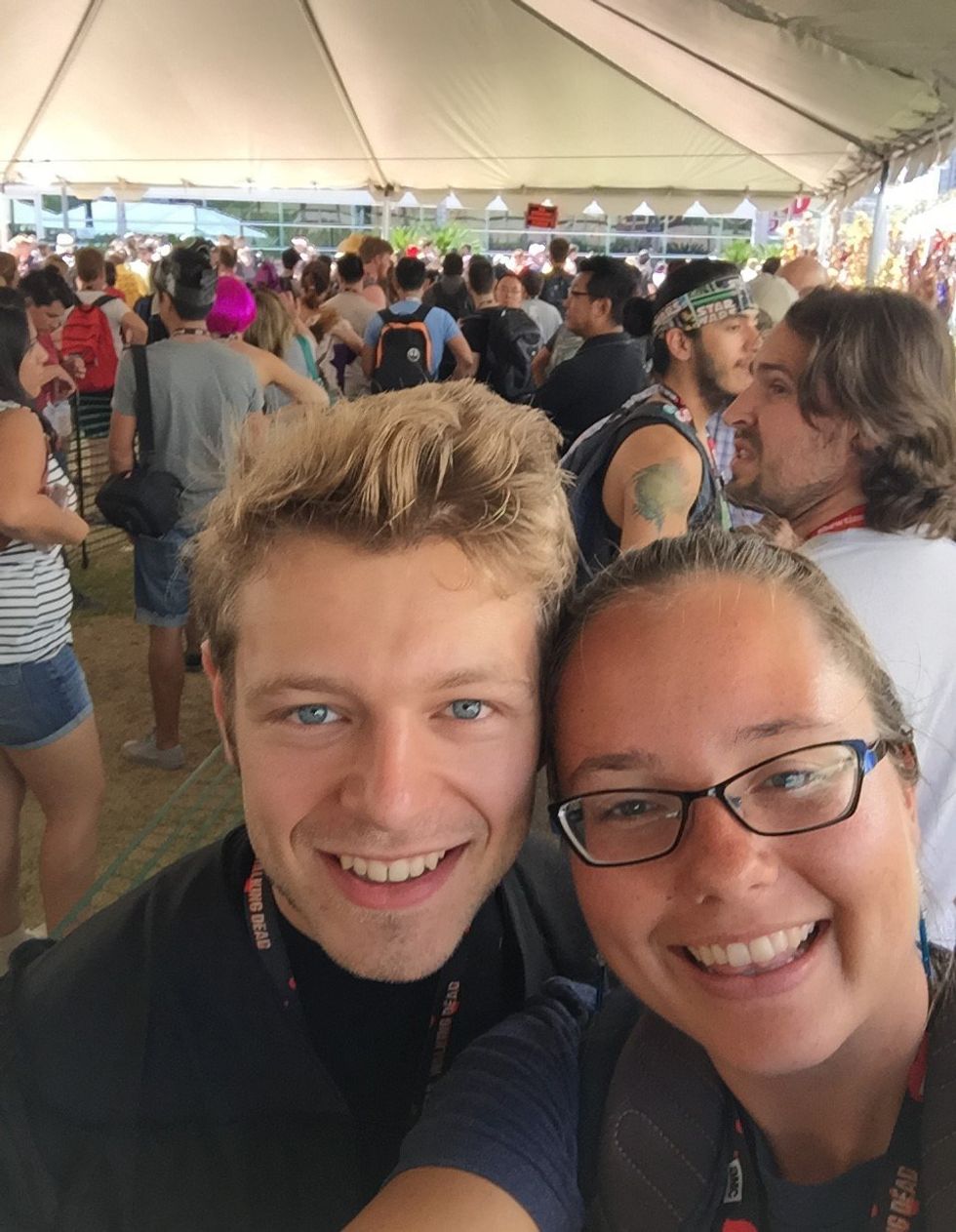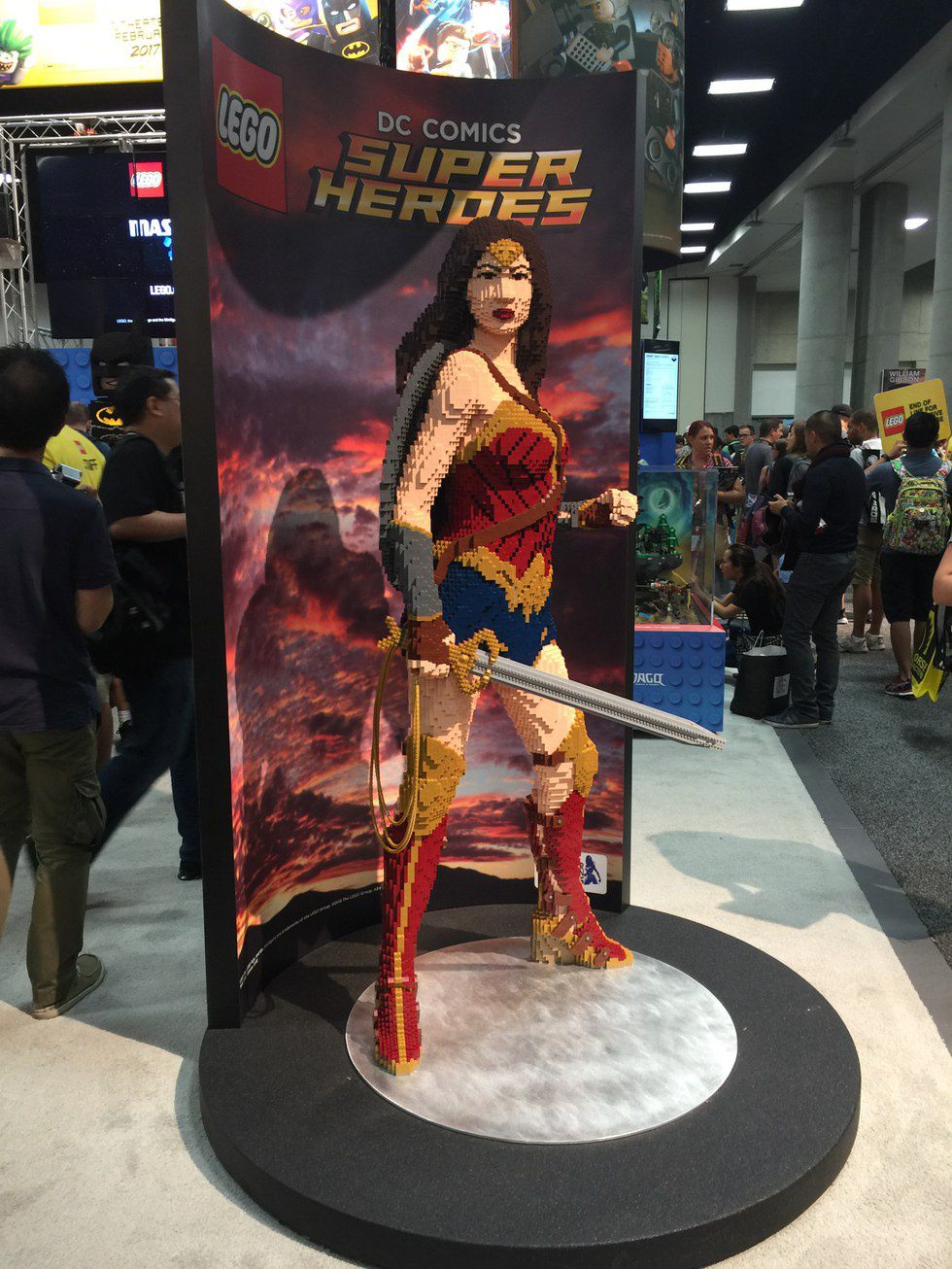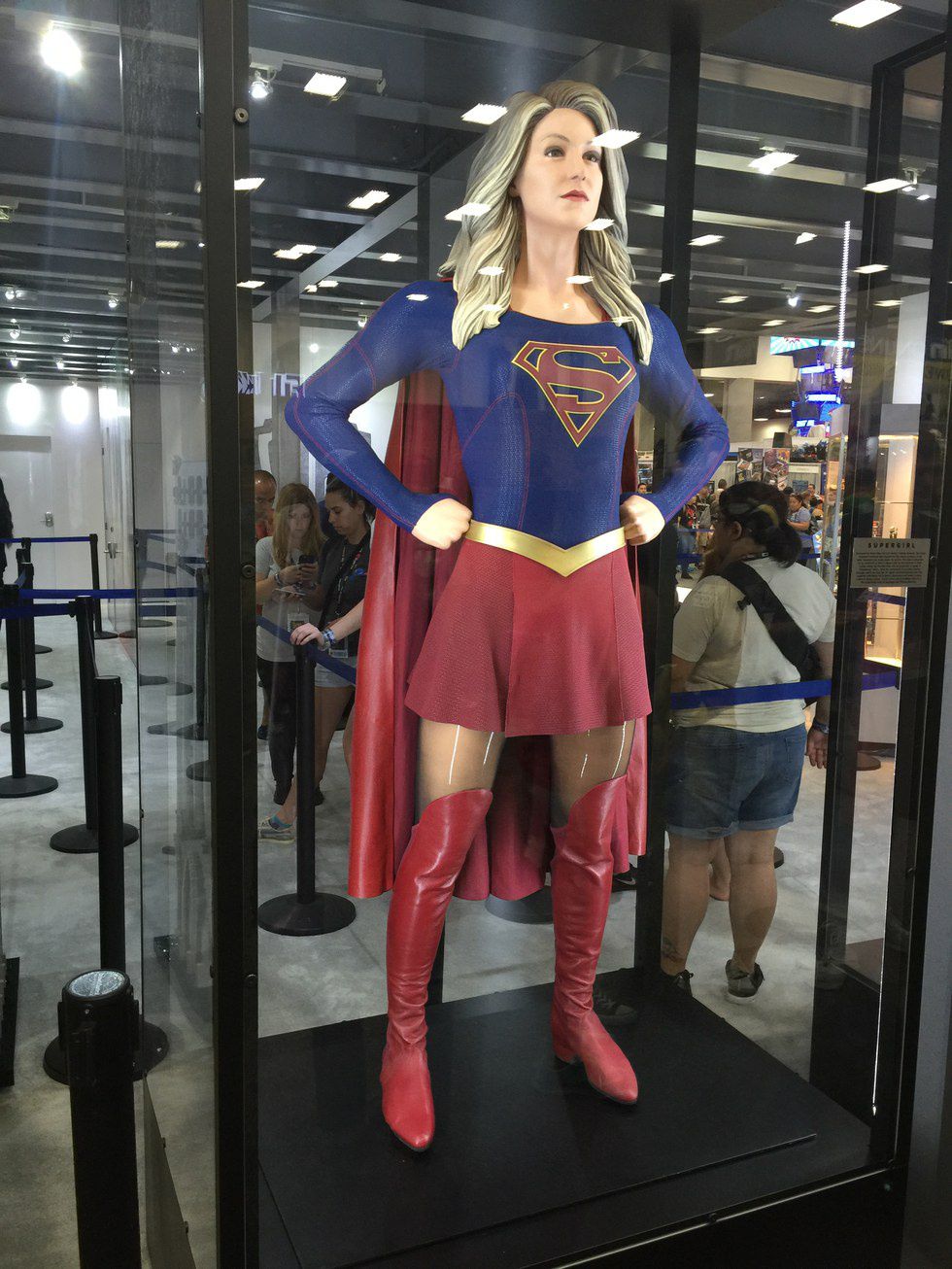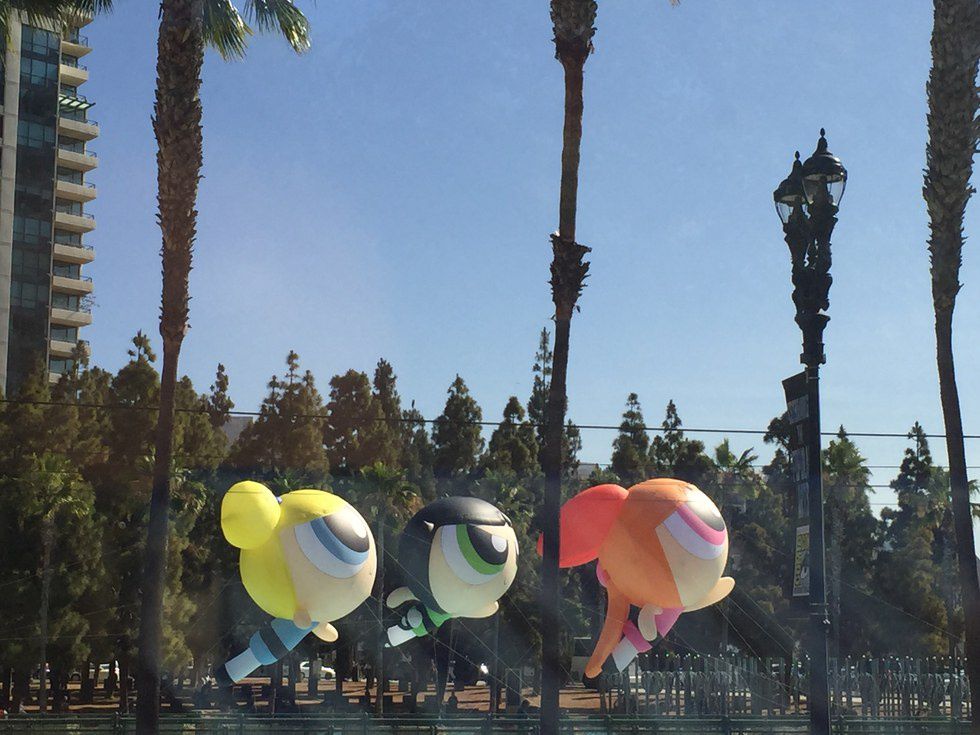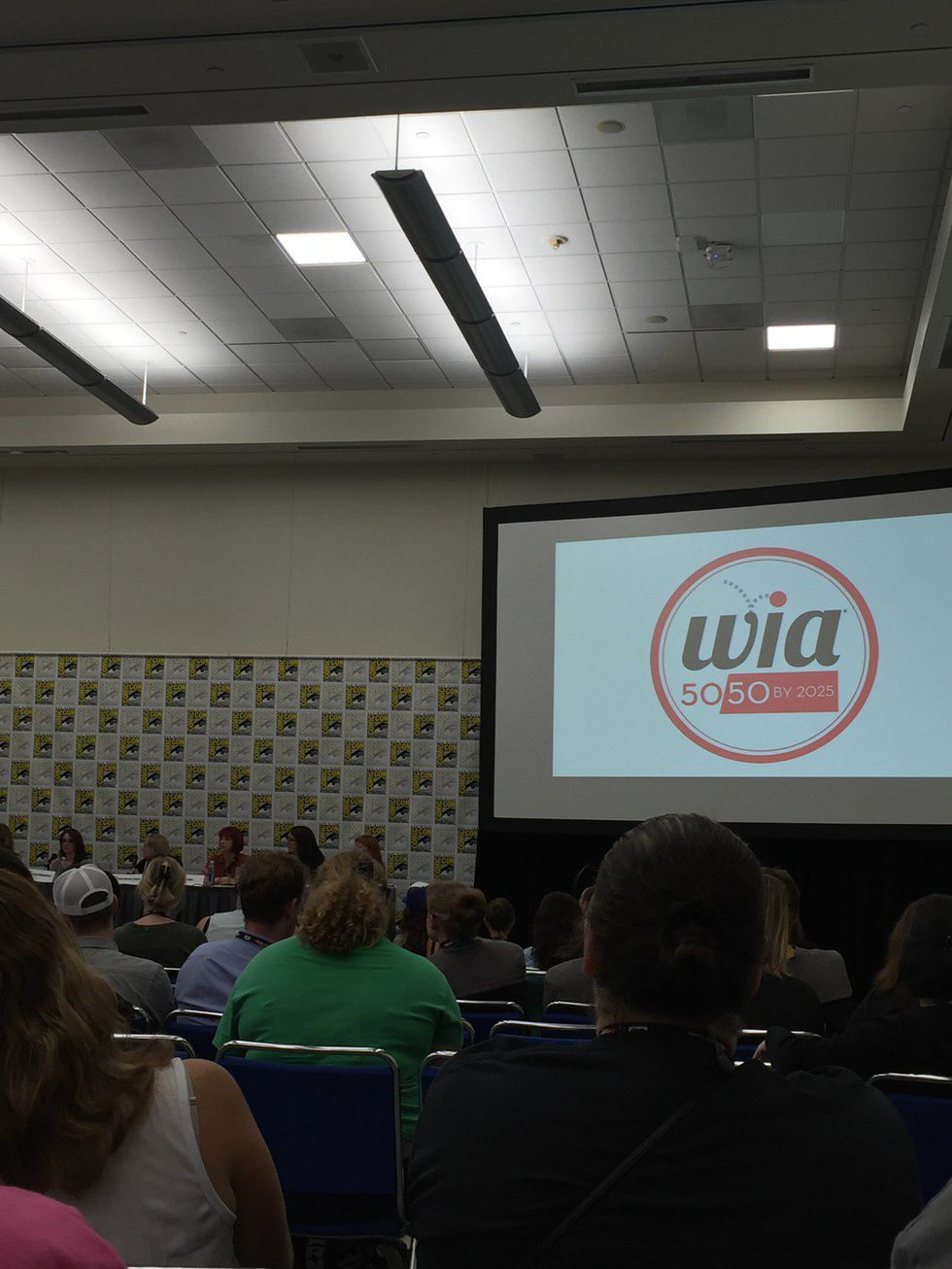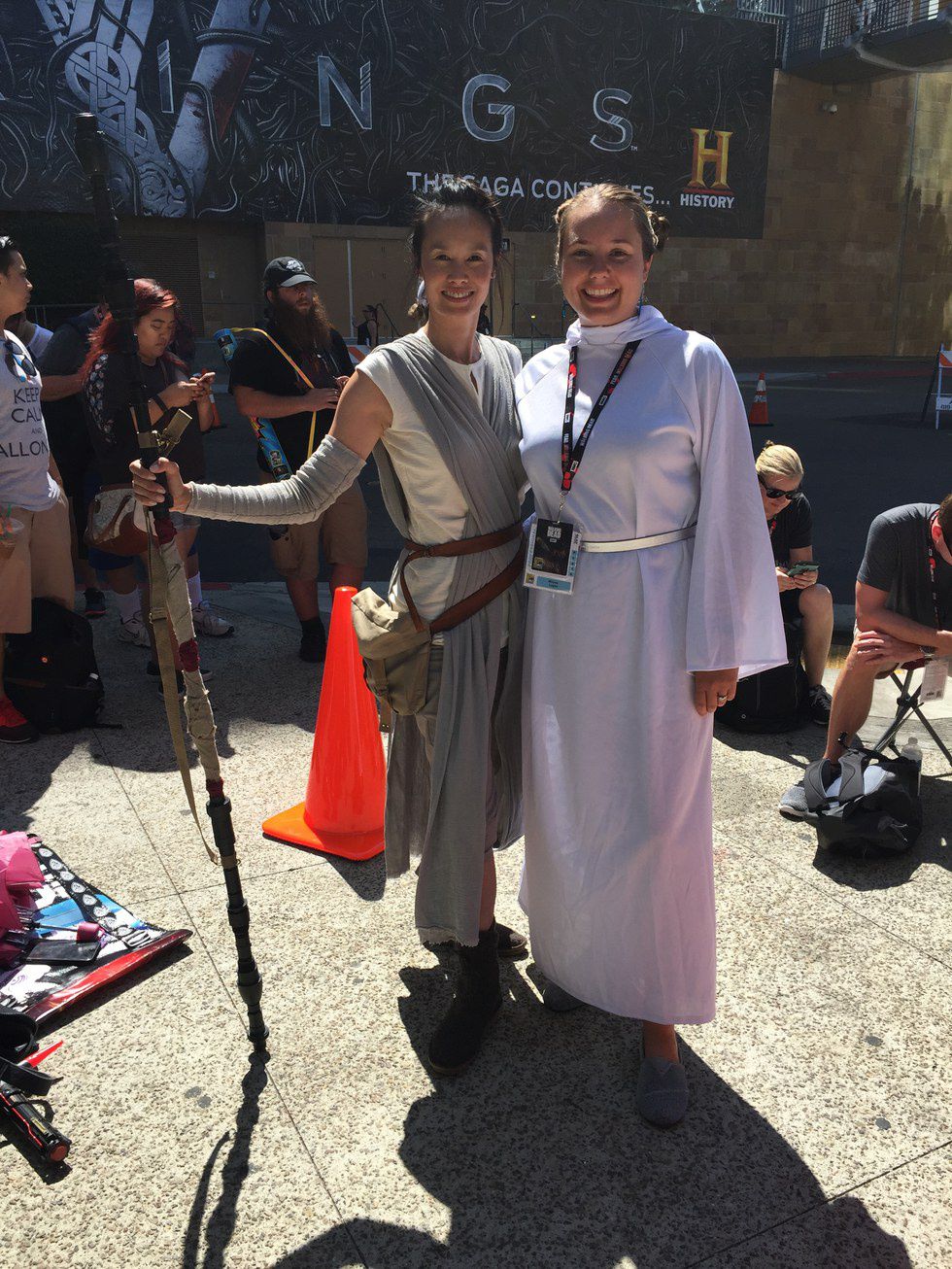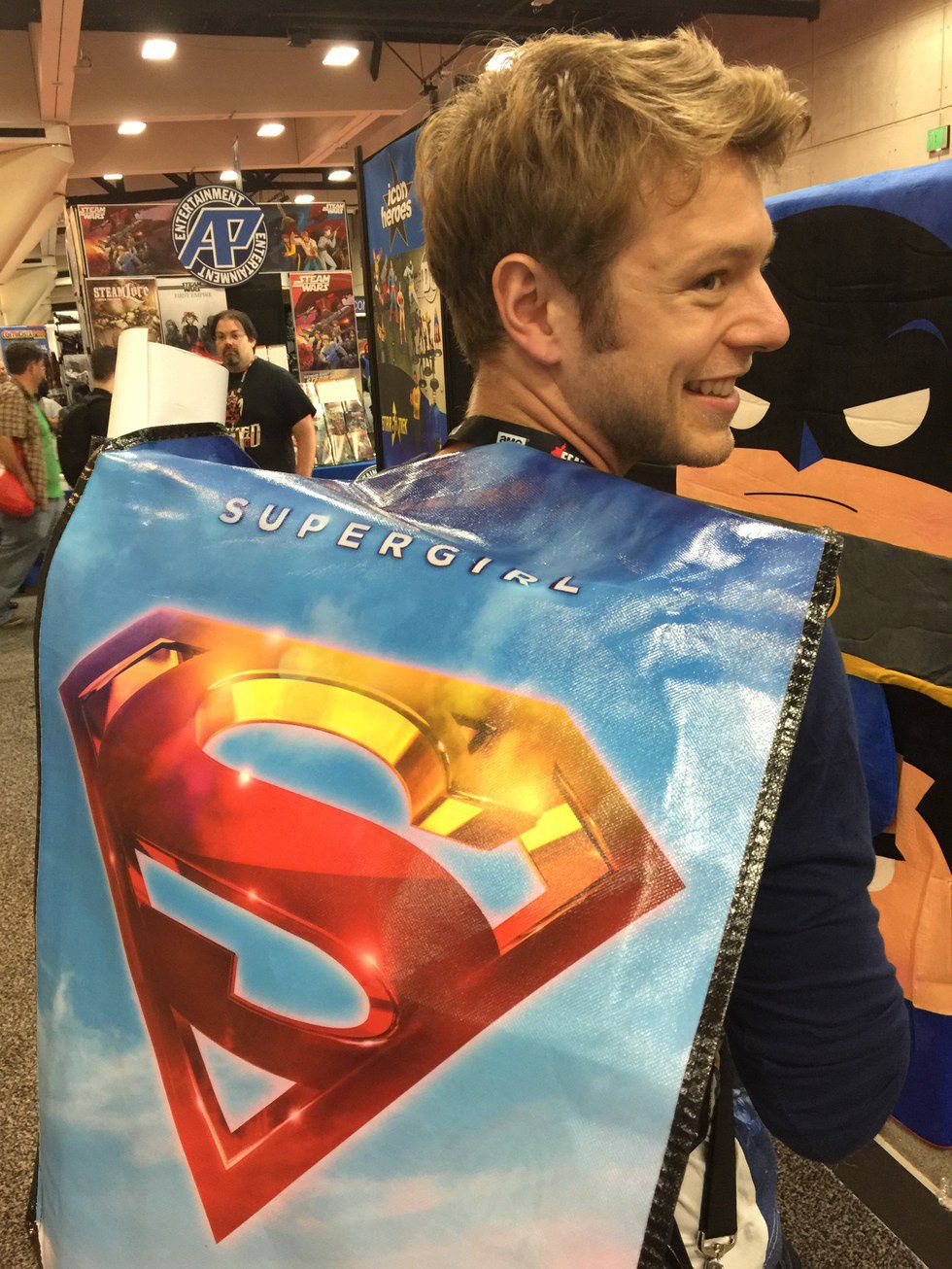This year, after living in San Diego for three years, I was lucky enough to acquire a badge to go to Comic-Con International at the San Diego Convention Center. In case you do not know, this is a five-day long event where you can buy all of the limited edition comic books and action figures of your dreams, watch first sneak peaks of the latest superhero movies, and maybe even see a celebrity or two hanging around the event. Here is a picture I took of Eddie Redmayne while wandering around the main exhibit hall:
Comic-Con win!
After living in New Orleans for several years, this event pretty much seemed like Mardi Gras, but for nerds (#NerdyGras). It is definitely a marathon, not a sprint, and the lines to get into the main panels with celebrities are not for the faint of heart. Here is a selfie of my fiancé and me while waiting four hours in the summer heat to see the cast of Game of Thrones, only to find out minutes later we were the first ones in line to be cut off from entering the event due to the hall’s capacity being reached.
Comic-Con fail.
While the event was filled with some emotional highs and lows, I was not expecting one of those highs to come from the feminist overtones of the whole event. Yes, you read that correctly: this event was all about the ladies:
Although male Comic-Con goers sometimes harass females in scantily-clad costumes (no, I do not have a Slave Leia outfit underneath my Episode IV outfit), the culture I encountered at this year’s Comic-Con was luckily very respectful toward the many female cosplayers. I saw so many cosplays of the female character Rey from the latest Star Wars movie that I lost count. I even saw some men rocking the costume! Harley Quinn cosplays were even more numerous due to the imminent release of the movie Suicide Squad, and one of the biggest movie trailer reveals of the week was for Wonder Woman. Watch it for yourself and feel all of the feels:
From my point of view, it seemed like the female characters were in the spotlight and had taken over Comic-Con; in reality, women were still underrepresented at The Con. Wonder Woman, who was created 75 years ago, will unbelievably be the first female super hero to have her own movie. Although most Con-goers seemed open to anything and everything (I even saw a person dressed as a t-rex dressed as Deadpool!), I realized that the industry still fails to represent women and men equally. Thankfully, there are women and men at major studios, such as DreamWorks, Cartoon Network, Warner Brothers, Marvel, Disney, etc., who are trying to change that. The insightful and optimistic panels I saw with female animators, visual effects directors, executive producers, movie directors, bloggers, activists, and actors made me hopeful for the future of feminism in Hollywood and other media industries.
Here are some of the ways I learned the industry is changing to become more balanced and how you can help make it that way too:
The Women in Animation (WIA) organization has made it a goal to have 50/50 gender representation in the industry by 2025. The panel entitled “Cartoon Creatives: Women Power in Animation” was filled with confident female mentors in the animation industry. Emmy award winner and My Little Pony creator Lauren Faust said that it is important to target and tell stories about women and girls in order to increase female representation. Lauren Montgomery, who is co-showrunner for Voltron: Legendary Defender, said that DreamWorks liked the idea of making Pidge, originally a male character, into a female character in the action and adventure show. Katie Krentz, who is director of development at Cartoon Network, mentioned that it is getting increasingly easier to develop shows about women because both men and women are coming in to pitch them to the studio executives.
The panel I went to with some of the most passionate opinions was “The Most Dangerous Women at Comic-Con: To Bechdel, Or Not to Bechdel.” For those of you not familiar with it, a movie or TV show passes the Bechdel test if there are at least two female characters present in the same scene who converse about something other than a man. Essentially, it is a way to tell if female characters are defined by something other than romantic relationships with male characters. One of the most important statistics I gleaned from the panel is that none (zero) of the top ten highest grossing movies of all time pass this test. The panelists also confirmed that crowd scenes in movies have less than 12 percent female representation, with the rest of the crowd typically being white males. Be on the lookout for that in the next movie you see! Although the panelists said money is the driving force behind which actors the studios cast for their productions, they also explained that the studios are closely monitoring Twitter for fan reactions. If you happen to watch a movie that passes the Bechdel test, share it on social media to spread the word! Also, do not be afraid to speak out against movies that do not pass the test. The panelists all have their own Twitter accounts that you could follow as well: Jenna Bush @JennaBusch, Ashley Bles @Beebidon, Dr. Janina Scarlet @ShadowQuill, Jennifer Stuller @InkAmazon and Tony B. Kim @Crazy4ComicCon.
In addition, one of my favorite things to do is call out bad Hollywood advertisements, which usually take the form of movie posters- if you see a movie poster featuring a woman with only her body shown in the picture, tweet it to Headless Women of Hollywood @HlywoodHeadless. That way, you could call out the hypersexualization of women in media via Twitter for all of the studios to see!
The last panel I visited was “Women Rocking Hollywood,” where I got to listen to Victoria Alonso (executive producer of Dr. Strange and Captain America: Civil War), Deborah Snyder (producer of Suicide Squad and Wonder Woman), Angela Robinson (producer of True Blood, director of Herbie Fully Loaded) and Catherine Hardwicke (director of Twilight) talk about how fans can help bridge the gender gap in Hollywood. According to the panelists, currently 15.2 percent of directors and 28.9 percent of writers are women. To make these numbers closer to 50 percent, the panelists recommend visiting blogs devoted to women in Hollywood and using your movie ticket purchase as a vote for female-made movies. Ms. Alonso even mentioned buying movies on demand to watch at home, or simply buying tickets on Fandango and giving away the tickets to someone else if you do not have time to see the movies. Another way you can help is by making a commitment to watch a woman-made movie every week and to use the hashtag #52FilmsByWomen to share your experience on social media. These powerful female panelists also expressed the importance of women taking on the responsibility of mentoring young women who want to be in the business and of men taking the initiative to open doors to women who are knocking to share their ideas.
Comic-Con 2016 is now over, but I cannot wait to the see how the gender statistics at next year’s panels will change after we all “get our tweet on” about amazing female-made films!




